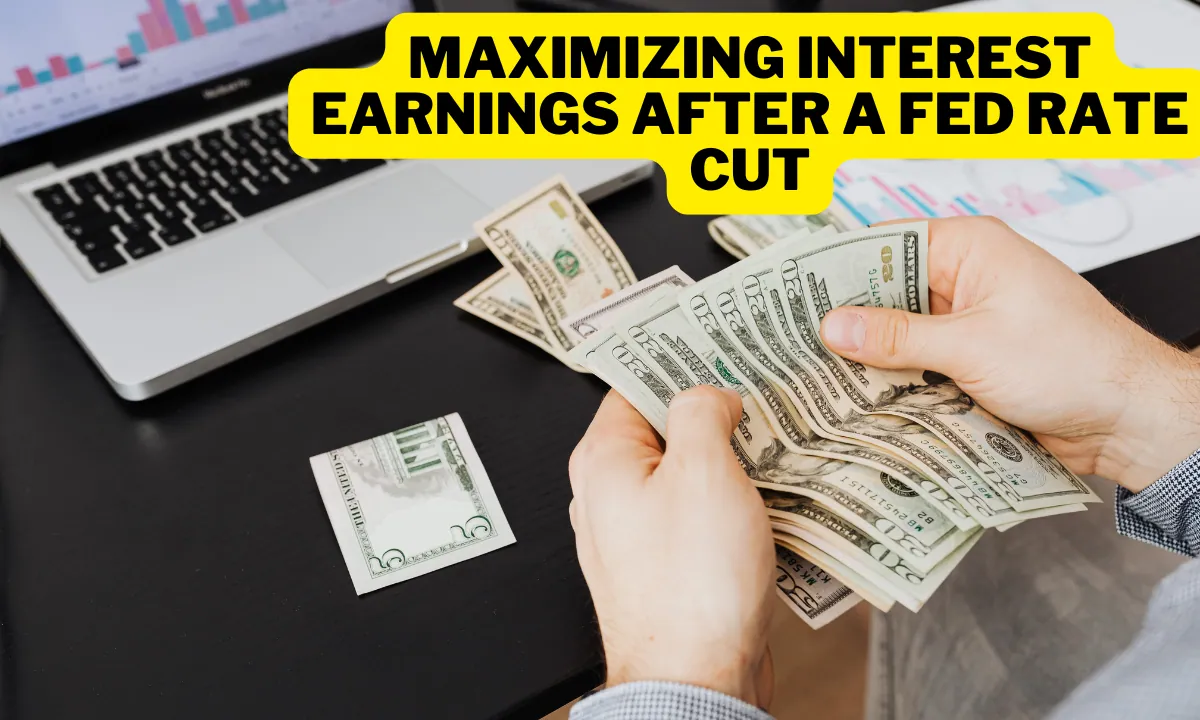With the Federal Reserve poised to lower interest rates for the first time since March 2020, many are preparing for the economic impact.
While a rate cut can bring relief for borrowers, it typically results in lower returns on savings accounts and certain investments.
Now is the perfect time to reassess your financial strategies and find ways to maximize your interest earnings despite falling rates.
What Happens After a Fed Rate Cut?
A Fed rate cut has far-reaching implications for consumers, particularly in how you save and borrow money. Here’s what to expect after the Federal Reserve reduces rates:
Impact on Loans
If you have existing fixed-rate loans, the Fed rate cut won’t affect them. However, new loans like mortgages, car loans, or refinancing options will likely come with lower annual percentage rates (APRs). This means borrowing becomes cheaper, and monthly payments can be more affordable.
Impact on Bank Accounts
The annual percentage yield (APY) you earn on bank deposits will decrease following a rate cut. This applies to checking, savings, and other interest-bearing accounts, meaning you’ll earn less on your cash balances.
Impact on Low-Risk Investments
For investments like certificates of deposit (CDs) and Treasury bills (T-bills), if you’ve already locked in your rate, it will stay the same. However, rates on new CDs and T-bills are expected to drop.
How to Maximize Interest Earnings After a Rate Cut
While the Federal Reserve’s initial rate cut is expected to be conservative, future cuts could further reduce interest rates. To protect and grow your savings, now is the time to act.
Choose a High-Interest Bank Account
To maximize your earnings on day-to-day cash and emergency savings, consider switching to a high-interest bank account. With traditional banks likely reducing their APY, explore alternatives such as:
- High-yield checking accounts
- High-yield savings accounts
- Online bank accounts
- Credit union accounts
- Mutual bank accounts
These options typically offer higher interest rates than standard accounts, helping you earn more on your balance.
Open a CD Now to Lock in High Rates
If you have savings that you don’t plan to use shortly, moving it to a certificate of deposit (CD) can help you lock in current high rates before they drop. With some CDs offering over 5% APY, this is a smart way to secure a high return for the long term.
To maximize your earnings:
- Compare CD rates and terms to find the best deal.
- Opt for longer-term CDs to retain high rates past any future cuts.
- Consider CD laddering if you’re unsure when you’ll need the funds. This involves opening several CDs with different maturity dates, allowing you to access your money at various intervals without sacrificing too much interest.
Lock in T-Bill Rates
Like CDs, Treasury bills (T-bills) offer a secure way to lock in current high interest rates. Presently, T-bills provide returns close to 5%, but that may change after the Fed cuts rates.
Before purchasing T-bills, compare the available rates with those of CDs to ensure you’re getting the best return.
An added advantage is that T-bill earnings are exempt from state and local taxes, making them a tax-efficient investment.
Rebalance Your Long-Term Investment Portfolio
As interest rates fall, traditional fixed-income investments like CDs and bonds may offer lower returns.
To maintain or grow your wealth, you may need to increase your risk exposure by shifting funds into equities.
- Consider stock investments that are more sensitive to interest rate changes, such as real estate investment trusts (REITs) and small-cap stocks. Rate cuts often benefit the stock market, but it’s essential to remain patient as the market adjusts to new economic conditions.
- Diversify your portfolio to balance risk, ensuring you have a mix of both low-risk and higher-risk assets that can help you achieve your financial goals.
Final Thoughts: Be Proactive to Maximize Earnings
While a Fed rate cut might mean lower interest on savings and fixed-income investments, it doesn’t mean you have to accept lower returns.
By switching to high-yield accounts, locking in favorable CD or T-bill rates, and rebalancing your investment portfolio, you can still maximize your interest earnings and keep your money working for you.
Taking proactive steps now will position you to make the most of the changing rate environment while protecting your financial future.
